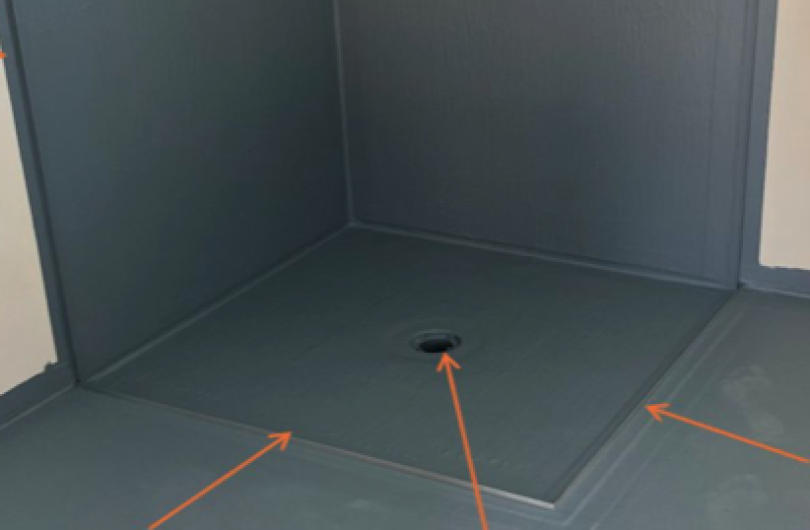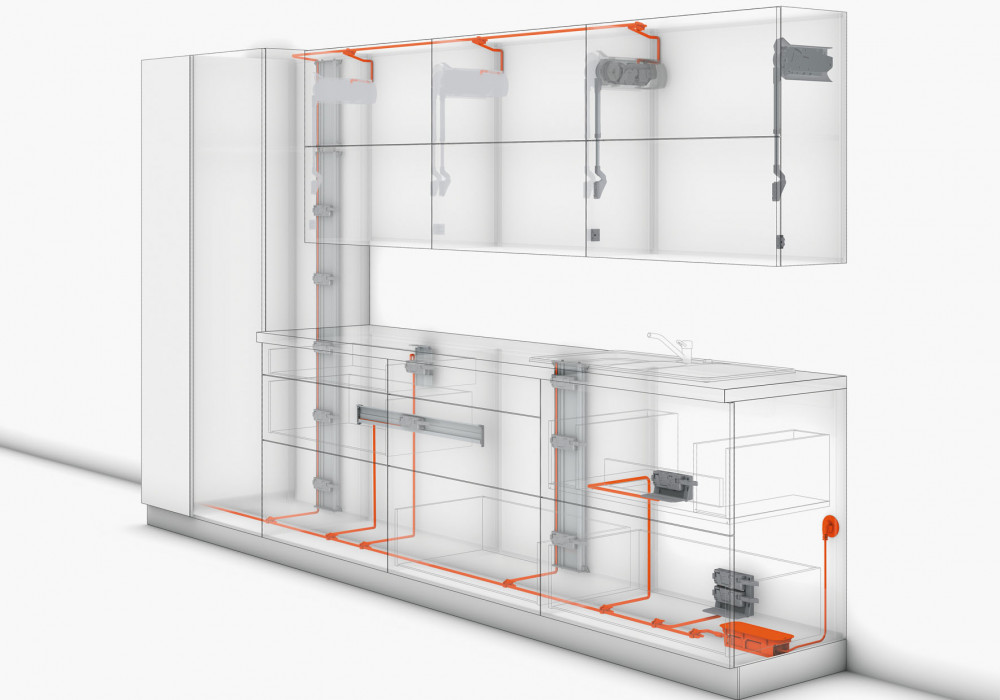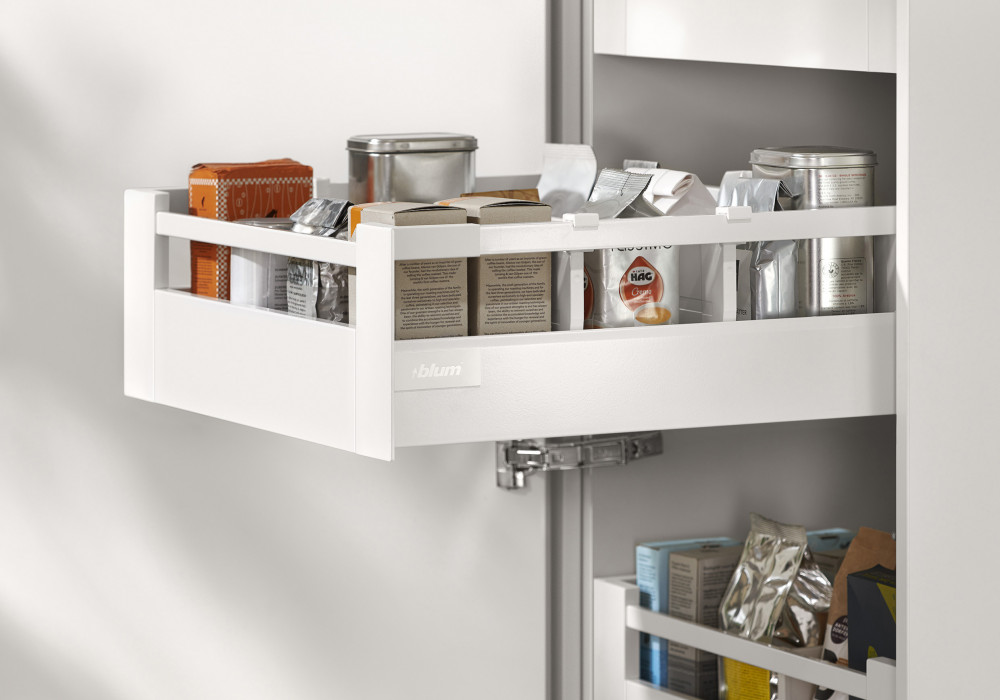
Blum New Zealand is proud to be a product partner with Lifemark. Beyond products, Blum and Lifemark share similar values, morals and ideas. They even share similar ageing simulation suits: Blum’s Age Explorer suit and Lifemark’s Age Lab suit. Both companies believe it is essential for New Zealanders to have safe and accessible living conditions in their home, now and for the future.
Blum has done extensive studies into ergonomic living, mostly within the kitchen. This includes features like having drawers below bench-height for storage — achieving easy and unobstructed access to items without having to bend down and lean into cupboards pulling out everything to reach that one pot lid right at the back.
Blum has collaborated with the team at Lifemark and asked them some valuable questions, so they can share their vast amounts of knowledge when specifying products and designing plans in homes:
Who is Lifemark?
A division of CCS Disability Action, Lifemark is an NZ organisation that advocates for the inclusion of Universal Design. In 2001 Lifemark established a globally recognised and award-winning process that combines guidance with assurance to support homeowners, designers, architects, builders, developers and retirement living organisations to design and build homes that are inclusive and safe for the widest range of people. Lifemark works on projects ranging from stand-alone architectural ‘forever homes’, private housing developments, lifestyle and retirement villages to large-scale social housing projects.
What is “Universal Design”, and why does it matter?
Our population is rapidly ageing and currently, nearly 1 in 4 kiwis will struggle with some form of impairment from arthritis to being reliant on a mobility aid. The building code offers no guidance or assurance in designing homes for this changing population and consequently, around 30% of kiwis will sometime in their life find their home a challenge to live in personally or find that someone they love (such as an older relative) is not able to stay or even visit them easily. Making design decisions using UD Best Practice changes this and makes products we use, our homes and our built environment easier for and more welcoming to the widest number of people.
How many Kiwis are affected in some way by a form of disability?
The latest disability survey indicates nearly 1 in 4 Kiwis have some form of disability. For Kiwis aged 65+ years nearly 1 in 2 live with some level of mobility impairment.
How does a product become Lifemark approved?
Lifemark evaluates each product based on three core UD (Universal Design) principles:
- Usability — how does the design of the product promote ease of use?
- Flexibility — how has the design made provisions for changing needs such as a decline in sight or lack of mobility such as arthritis?
- Safety — how will the product support safe use for a wide range of people?
A product must be able to demonstrate it supports all three principles to be ‘approved’.
Which Blum products are Lifemark approved?
Lifemark reviewed specific products within the Blum range to identify products that demonstrated core UD principles (ie. supported high levels of usability, promoted safety and which would support changing needs of occupants). We endorsed opening systems such as SERVO-DRIVE that provided innovative options for hands-free opening of drawers and are great for people with arthritis/restricted hand movement, and in-drawer organiser systems: AMBIA-LINE and ORGA-LINE and SPACE TOWER systems for pull-out pantry options that offered highly usable and safe storage solutions for people of all ages. These endorsed Lifemark Approved Products offered excellent solutions for anyone looking to incorporate UD into kitchens and laundries.
- SERVO-DRIVE electronic opening support system for overhead cabinets with AVENTOS range
- SERVO-DRIVE electronic opening support system for Blum’s soft-close drawer and runner range
- AMBIA-LINE drawer dividing system and kitchen accessories for TANDEMBOX
- ORGA-LINE drawer dividing system and kitchen accessories for LEGRABOX
- SPACE CORNER drawer system for corner applications with TANDEMBOX
- SPACE TOWER pantry if gallery rail or safety glass specified
Is there any extra cost in a Lifemark approved plan vs a not Lifemark approved plan?
The cost for Lifemark to review plans for a home from concept stage and provide assurance through to final build is negligible. That said, the guidance that will support better design decisions and improve the usability and safety of a home is invaluable and with this provided from concept stages, the overall impact of add-on costs to the final build can also be negligible versus getting it wrong which can be very costly to retrofit once built.
With planning, you can futureproof a bathroom by positioning the toilet in the right place and for a few dollars (or even using timber cut-offs you may have already) reinforcing the wall next to the toilet and in the shower so you can install (if needed) grab rails. By doing this not only are you able to save thousands, but it can sometimes be the difference in being able to live in the home safely and independently or not. Likewise a lift. Including a lift in the design of a new multi-level home whilst the cost of the lift may be thousands, the cost both financial and emotional in having to move home (because the home becomes hostile) can ultimately make this a better decision. In the Thames Coromandel region where new homes are encouraged and incentivised to incorporate Universal Design/Lifemark, over 40% of all new multi-level homes have included lifts as part of the design from the outset.
Many design decisions around UD are based on using space better — often whilst these decisions don’t cost substantially more at design stages, the decision to maybe choose an open plan layout with wider doorways and achieve step-free access into the home will pay dividends later on against remediation which may be either impossible or extremely costly to achieve post-build.
Some design decisions such as wet rooms/ level entry showers or even Blum pull-out pantry systems can be considered costly but are also aspirational as well as hugely beneficial with regard to ease of use by the widest range of people.
In summary, trying to put a dollar value I think maybe needs to be viewed from perspectives of ‘people-centred’ /sustainable design versus a more ‘throw-away’ approach that may require homes to be modified to suit individual occupants needs. What would be the cumulative cost to adapt a home to meet the changing needs of occupants over 100+ years versus ‘getting it right’ at the outset.
How does the Lifemark star rating system have an impact on the housing market in terms of independent living of our ageing population?
All Lifemark star rated homes support Baseline Accessibility so will be easy to physically access, provide a toilet that will be accessible and safe to use and be able to move around the home easily — even for occupants using walkers or walking sticks. Lifemark 4 & 5-Star homes, however, have been designed to support higher levels of performance and will make living more comfortable for the older occupant — raised power points, well designed kitchen, bathroom and laundry spaces etc.
What are some easy accessibility-friendly ideas designers and architects can implement into everyday plans and specifications, without making any major changes to day-to-day business and planning?
Thinking about some key A,B,C’s:
- Access: How can we make getting into the home easy for everyone?
- Bathroom: Design a toilet or bathroom that makes it easier for everyone to use and also think about changing needs — reinforcing walls to take grab rails — or better still installing load-bearing slide rails or stylish towel/ toilet rolls holders that double as grab rails now.
- Circulation: Using space well so it’s easy for people to move around the home — wider hallways, doorways, open plan layouts etc. When designing storage in kitchens, laundries etc. a very easy way to make these spaces usable for everyone is to replace cupboards with drawers.
How does futureproofing residential building provide a point of difference to specifiers?
It communicates first and foremost you care and have put people first in your approach to design. Isn’t that what ‘home’ should mean anyway? Currently under 5% of NZ homes are able to demonstrate they have included Universal Design principles to make them accessible to more people and with a rapidly ageing population.
If you could give everyone your best, most beneficial piece of advice, what would it be?
Whilst how it looks is important, ensure usability is of equal importance when designing a kitchen or a home.
It's clear that a significant number of Kiwis require a little extra thought when it comes to planning or designing their home, but don’t always have the knowledge to make these decisions. That’s why we think it’s crucial to have a good relationship with each customer and realise the small, extra requirements that they may not — like having SERVO-DRIVE on drawers if they have issues grabbing handles or preinstalling the foundations for adding grab rails.
For more information on Universal Design, visit www.lifemark.co.nz
Or head to www.blum.com to see the Blum range in full.













 New Products
New Products





























 Popular Products from Blum
Popular Products from Blum


 Most Popular
Most Popular


 Popular Blog Posts
Popular Blog Posts
